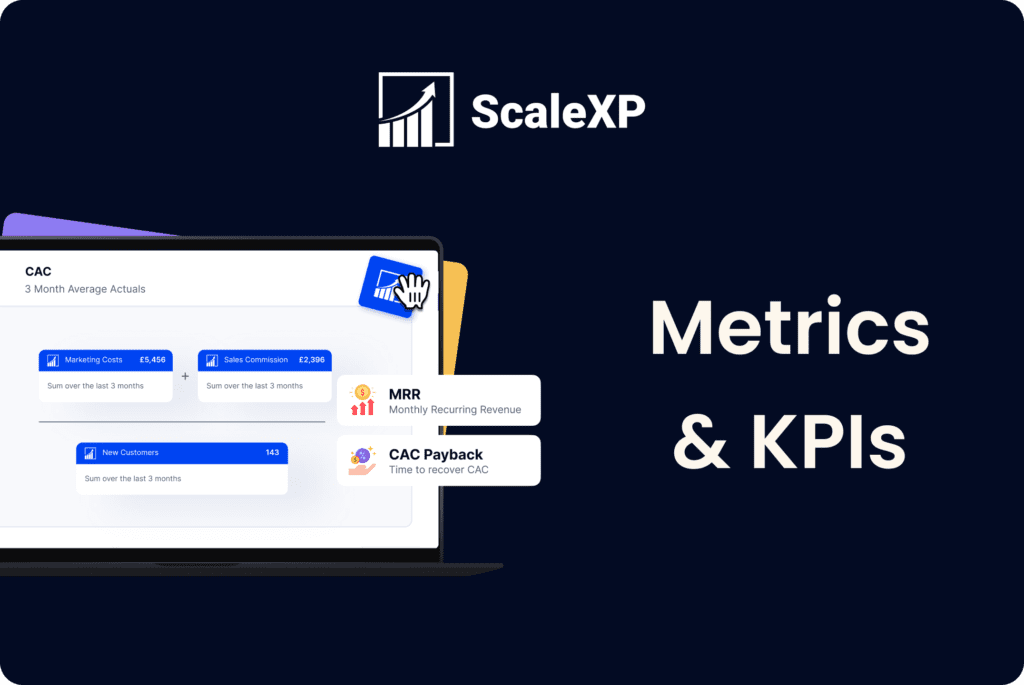When it comes to Software as a Service (SaaS), Annual Recurring Revenue (ARR) stands out as a vital metric, guiding Chief Financial Officers (CFOs) and investors through the complexities of company valuation.
Understanding and leveraging ARR is not just about crunching numbers – it’s about unlocking the narrative of a company’s growth, stability, and future potential.
What is ARR and why does it matter?
At its core, ARR represents the predictable and recurring revenue generated by a SaaS company from its subscription-based services, calculated over a 12-month period. Think of ARR as the financial heartbeat of a SaaS company – it’s a clear indicator of the health and vitality of the business.
For CFOs, ARR goes beyond a mere accounting figure. It serves as a strategic tool, offering insights into customer loyalty, revenue stability, and growth potential.
In a landscape where the pace of technological change is relentless, ARR provides a constant measure to evaluate the sustainability of a SaaS business.
The Science of calculating ARR
Calculating ARR might seem straightforward – simply multiply your Monthly Recurring Revenue (MRR) by 12. However, this formula only scratches the surface.
The real art lies in understanding the nuances behind these figures. It’s about discerning the patterns of customer subscriptions, identifying revenue trends, and predicting future growth.
The role of ARR in company valuations
When it comes to valuing SaaS, ARR is more than just a number – it’s a narrative. It tells a story of how well a company is capturing and retaining its market.
For investors and stakeholders, the ARR is a yardstick for measuring the company’s financial health and its potential for future growth.
Navigating the waters of ARR valuation trends
The valuation landscape for SaaS companies is ever-changing, with ARR valuation multiples serving as a critical indicator. These multiples, representing the company’s value divided by its ARR, offer a glimpse into how the market perceives the worth of a company.
Understanding these trends is crucial for CFOs in positioning their companies favourably in the eyes of investors.
Read more about ARR benchmarks and trends as part of our benchmarkiing series here.
A strategic playbook for CFOs: optimising ARR valuation
For CFOs, optimising a company’s ARR is a strategic mission. It’s about striking the right balance between aggressive growth and sustainable profitability. This involves a deep dive into customer retention strategies, pricing models, market expansion opportunities, and sales efficiency.
Each of these elements plays a pivotal role in shaping the company’s ARR and, by extension, its market valuation.
ARR's crucial role in securing funding and investments
For any SaaS company, particularly in its nascent stages, securing funding is akin to finding a lifeline.
Here, ARR comes into play as a pivotal metric. Investors, be it in the seed round or at more advanced stages like Series A and B, scrutinise ARR to gauge the company’s potential for growth and sustainability.
A robust ARR indicates a strong customer base and a product that resonates with the market, thereby making the company a more attractive investment proposition.
Seed round considerations
In early stages, investors might weigh potential for ARR growth over its current value, focusing on sales traction, market opportunities, and the team’s expertise.
Series A and beyond
As the company grows, investors expect a significant and consistent increase in ARR, viewing it as a marker for readiness to scale. Here, factors like ARR growth rate, customer acquisition costs, and lifetime value come under scrutiny.
Series B and later rounds
At this juncture, investors seek evidence of sustained ARR growth and a clear path to profitability, relying on a range of metrics from ARR growth rate to market sentiment.
Navigating the current ARR valuation trends
As of 2024, ARR valuation multiples have seen a shift, adapting to the changing economic landscape. Understanding these trends is crucial for CFOs and founders in assessing their company’s market position and value.
The current trend indicates a valuation multiple averaging around 5.5x, marking a substantial reduction from peak values of 7x-8x in 2021 and 2022 during the global pandemic.
Strategic responses for SaaS CFOs and founders
In a fluctuating market, agility and strategic foresight are key. CFOs and founders can adopt several approaches:
Reduce Cash Burn Rate: Slowing down cash burn allows for fundraising in more favourable market conditions, thereby opening up more opportunities.
Focus on Smart Growth: Shift from a ‘growth at any cost’ model to one that emphasises smart growth. This can involve optimising customer acquisition costs and focusing on metrics like the Rule of 40, which is increasingly relevant in current market valuations.
Leveraging Tools like ScaleXP: Platforms like ScaleXP offer SaaS companies an edge by providing an automated, comprehensive view of key metrics, facilitating data-driven decision-making.
Looking to streamline your operations and save time? Learn how ScaleXP’s innovative solutions can transform your business efficiency. Or dive into our case studies and see how we’re helping businesses with their operational needs.
Embracing the future: the evolution of ARR valuation and its impact
The landscape of ARR valuation is not static; it evolves with market dynamics. As we navigate through 2024, it’s evident that SaaS companies are being valued more conservatively than in the peak years of the digital boom.
This shift reflects a broader market correction and changing investor sentiments. For CFOs, this requires a nimble approach to valuation, keeping abreast of current trends and forecasts. Understanding these market shifts is not just about survival; it’s about positioning your company to thrive in a changing economic landscape.
The art of increasing ARR: a strategic blueprint for SaaS companies
Increasing your company’s ARR is an art that requires a strategic blend of innovation, market understanding, and customer focus. Here are some actionable strategies:
Enhance Customer Retention: The cost of acquiring a new customer is significantly higher than retaining an existing one. Implement strategies to boost customer satisfaction and loyalty.
Expand Product Offerings: Innovate and diversify your service offerings to add more value to your customers, thereby increasing your ARR.
Explore Pricing Strategies: Consider revisiting your pricing model. A well-thought-out increase can significantly impact your ARR without alienating your customer base.
Penetrate New Markets: Expanding into new geographical or sector markets can open up new revenue streams.
Optimise Sales and Marketing Efforts: Sharpen your sales and marketing strategies to attract new customers and tap into different segments.
The future is now: embracing ScaleXP for next-level SaaS management
In an era where data is king, leveraging platforms like ScaleXP can be a game-changer for SaaS companies.
ScaleXP provides an automated, comprehensive view of crucial SaaS metrics, empowering CFOs with the data they need to make informed decisions. Integrating ScaleXP into your business processes can transform the way you track performance, manage finances, and strategise for the future.
Conclusion: navigating ARR valuation in the SaaS landscape
In conclusion, ARR valuation is a multifaceted and dynamic aspect of SaaS financial management.
As we progress through 2024, it is crucial for CFOs and SaaS founders to stay attuned to market trends, optimise their strategies, and leverage tools like ScaleXP to maintain a competitive edge. Book your free demo today.








